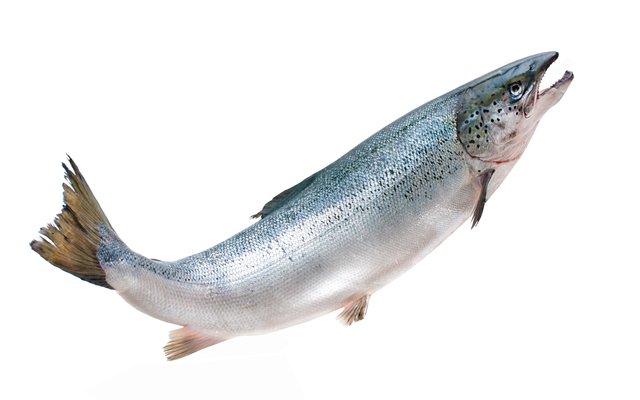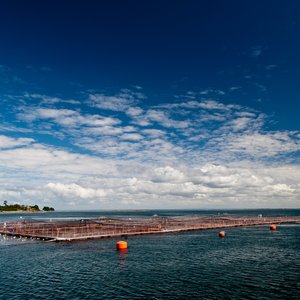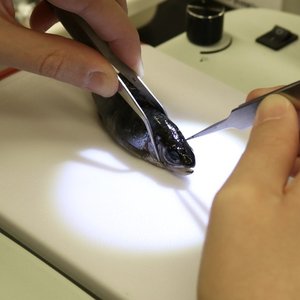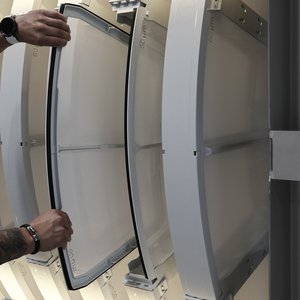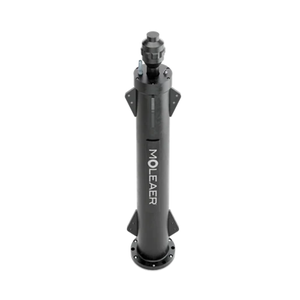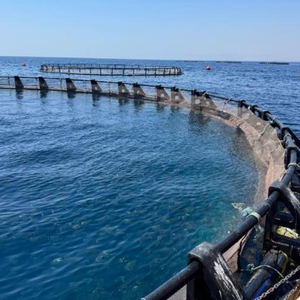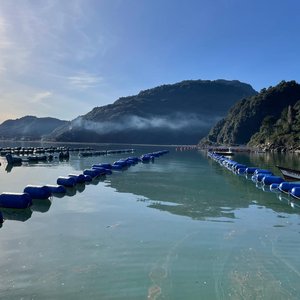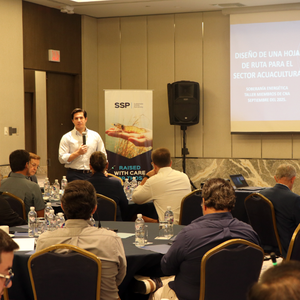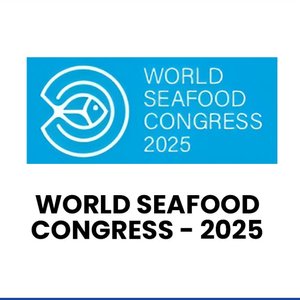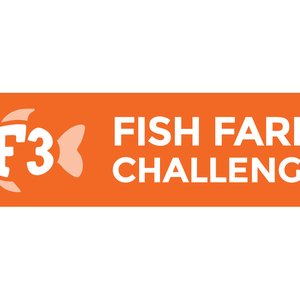During a Nofima’s recent webinar “Better Fish Welfare – Six Solutions”, researchers presented new insights and tools to address some of the industry’s most pressing challenges. The talks highlighted different aspects of fish health, from parasite resistance and bacterial infections to environmental impacts, internal organ monitoring, and advanced diagnostic technologies.
Why do coho salmon win the battle against lice and Atlantic salmon don't?
The sea lice is a major challenge in aquaculture, impacting fish welfare, production, and regulations. Sea lice have a life cycle starting as eggs, progressing through larval stages, and later becoming infective copepods. A single larva can multiply to hundreds of millions in one season, making the control critical aspect. Current treatments include mechanical removal, lasers, chemical baths or feeds, and cleaner fish, but a perfect solution that is cost-effective, fish-friendly, and environmentally safe does not yet exist.
In Chile, it has been observed that coho salmon have a unique ability to reject lice after initial attachment. Investigations done in the CRISPResist project showed that coho salmon activate neutrophils, special immune cells, upon lice attachment, leading to the lice’s elimination.
Efforts to transfer this resistance to Atlantic salmon via gene editing are complex because neutrophil recruitment involves many cell types, genes, and pathways, making the development of resistant Atlantic salmon a long-term goal. The key takeaway is that targeting the early lice stages is crucial.
NOFIMA is now developing lab-based cell cultures to study lice behavior and screen potential therapeutics, aiming to improve existing treatments like mechanical methods, lasers, and chemicals to control lice at their earliest stages more effectively.
Strategies for mitigating bacterial skin ulcerations
Atlantic salmon skin plays a key role in protection and regulation, but when it is weakened, it becomes vulnerable to bacterial ulcerations. In Norwegian aquaculture, the main concerns are tenacibaculosis and winter ulcer disease.
Tenacibaculosis, caused by Tenacibaculum finnmarkense, often strikes after seawater transfer and can lead to high mortality. Research has identified potential vaccine proteins that triggered protective immune responses in trials. Low salinity seawater before transfer has also reduced losses, suggesting a practical management option if balanced with production risks.
Winter ulcer disease, caused by Moritella viscosa, develops more slowly but persists longer. Usually, it appears on the sides of the fish’s body, where the skin is covered with scales. Effective vaccination depends on matching the vaccine strain with the circulating variant, while rapid removal of diseased fish helps reduce pathogen load and spread.
In both cases, targeted vaccination remains the cornerstone of prevention, supported by careful husbandry practices that strengthen fish resilience and limit outbreaks.
This is what the temperature does to salmon´s health and development
Temperature is one of the most important factors in salmon farming, shaping growth, health, and welfare. A new long-term study from Nofima suggests that raising smolts in slightly warmer water may be more beneficial than previously thought.
Researchers tracked Atlantic salmon from 10 grams to slaughter, testing rearing temperatures of 8°C, 12°C, and 14 °C. Fish kept at 14 °C grew nearly twice as large as those at 8 °C before seawater transfer and maintained their growth advantage through the production cycle. Likewise, survival rates remained high across all groups.
Concerns that higher smolt-rearing temperatures could harm heart health or long-term performance were not confirmed. Only minor issues were observed, such as a higher rate of mild cataracts and slightly smaller hearts in the warmest groups, but no serious pathologies developed. In addition, salmon from the 12–14 °C groups showed better product quality, including superior fillet color.
The study also confirmed that light cycles, not temperature, play the biggest role in smoltification. Overall, the findings suggest that rearing salmon at up to 14 °C during the smolt stage is safe and can even improve long-term performance, provided water quality and density are properly managed.
Why should you care about liver health?
Fish welfare assessments often focus on what can be seen from the outside (eyes, gills, skin, and fins) while internal organs are rarely evaluated. Likewise, organs like the liver play a central role in growth, detoxification, osmoregulation, and immune support, making them critical to overall health and performance.
Traditionally, assessing liver health requires invasive and costly laboratory methods such as fat content analysis, metabolomics, or gene expression studies. These techniques provide valuable insights but are too slow and expensive for routine welfare checks.
Nofima researchers have been testing hyperspectral imaging, a technology that analyzes tissue composition rapidly and at low cost. By training models on spectral images and laboratory data, they were able to accurately predict liver fat content in salmon, cod, and seabass, with high precision (R² up to 0.89 and error rates near 1%). Once models are established, new samples can be processed quickly, producing quantitative data rather than subjective scoring scales.
This approach opens the door to applications in aquaculture, from nutrition studies and disease trials to breeding programs and routine welfare audits. By looking beyond external signs and incorporating liver health into assessments, the industry can gain a complete and reliable picture of fish welfare.
Can live diagnostic tools help prevent sea loss?
One of the biggest challenges in salmon farming is mortality in seawater stages that can reach up to 15. While losses happen in the sea, a significant percentage of the damage occurs earlier in freshwater. The nephrocalcinosis is increasingly recognized as a major problem, reducing welfare, growth, and survival. Preventing unhealthy fish from being transferred to sea is therefore critical, both for individual performance and to avoid stressing and infecting other fish.
Live diagnostic tools, such as ultrasound and X-ray, offer promising solutions. These technologies, long used in human and veterinary medicine, allow health issues like kidney stones, heart problems, and nephrocalcinosis to be detected in living fish without sacrificing them. Ultrasound, in particular, is already being adopted in commercial systems for sex sorting and health checks before vaccination, enabling producers to remove weaker fish before sea transfer. New portable and affordable ultrasound devices are making this technology more practical for routine use.
X-rays provide highly detailed insights into conditions like nephrocalcinosis, and when combined with individual fish tagged (using PIT tag), they allow researchers to follow disease development over time. While X-ray remains less practical for field use, it is a powerful research tool.
Training veterinarians and fish health practitioners to use these diagnostics is now underway. It is expected that, by applying such technologies at scale, the industry can significantly reduce sea losses, potentially cutting mortality from 15% down to 5%.
Find more information about the presentations here.


